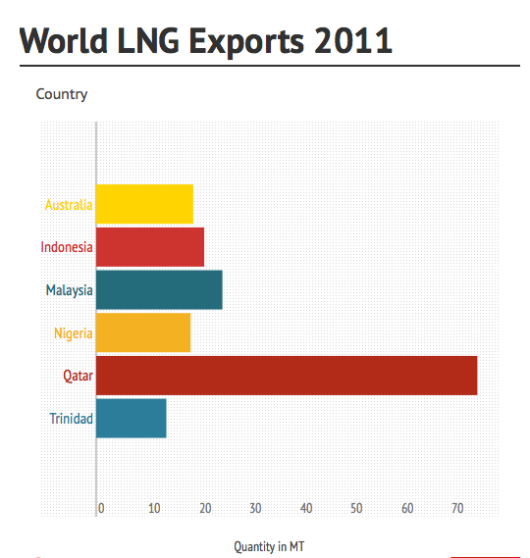So where do we go from here? The past few years have been rough for the US economy to say the least, but with the recent shale boom and increased production in natural gas, there might be hope for a bright US economic future.
As I mentioned last week in my blog, Pushing the Economy Forward, the economy needs to get back on its feet and I believe that natural gas in the manufacturing industry will help make this a reality. The US has the largest manufacturing sector in the world and growth in domestic manufacturing has a multiplier effect on the broader state of our economy. More production in this sector alone can lead to new capital investments, help create more jobs, and increase the US exports of value added products; the GDP of the US will automatically see improvements and therefore get the ball rolling on the economy.
Increasing production in the manufacturing sector using natural gas should not be a problem considering the US has the lowest price in the world. Since 2005, the production of natural gas in the states has increased more than 25% and is expected to continue increasing into the later years. As of right now the US is producing more natural gas than the public is consuming, so what should we do with the excess amount of natural gas?
Exporting natural gas from the states has been a controversy ever since we started to accumulate excess amounts of it. Although there are certain groups fighting against the exportation of natural gas, this new era of sustainable energy has just begun, and in due time the US will become a major exporter of this “hot” commodity.
This new wave of energy has brought new light into the economy. Companies in several sectors of the economy, such as manufacturing, oil and gas, chemical, and many more, are now becoming more competitive than they have been in recent years. Competition is what makes an economy thrive and keeps them going.
If the excitement about natural gas continues, which it will, it will create a snow ball effect not only on a domestic economic level but on a global level as well. Countries who invest in this new sustainable energy will also see improvements in their domestic sectors as well as its overall economy. And when the power house economies thrive, it pushes other economies to thrive as well.
What do you know, there may be hope for our futures after all!








